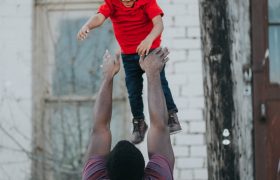When to Start Your Child in Martial Arts: What to Consider

There is a wealth of data that shows how great martial arts can be for children. These practices can focus the mind, build patience, teach discipline and empower people of any age. At the same time, martial arts are physical practices with a big spectrum of intents. Some are much more tranquil and spiritual while others are highly competitive, possibly dangerous without proper teaching and protection. The wise choice is to always educate yourself, and your child, on what martial art is a good fit and why you want to pursue it.
Once you have some clarity on the general topic it’s time to focus on when is the right age to start. One important point is that it is never too late. Plenty of world-renowned martial artists started very late in life.
But what age is the right age to start? Well, there is actually a lot of disagreement. And it is not as easy as calling your closest martial arts school, or dojo, to get the right answer. They might start kids at age four, but is your child ready for training at that age? Fortunately, here is a list of very important factors to consider so that you have all you need to make an informed decision about what age is just right to start your child in any martial arts.
It depends on the Martial Art
Boxing and kickboxing gyms might not allow younger kids because of the risk of concussions without proper safety equipment and discipline. The exception is for classes in the fundamentals, like stances, jabs, and slipping punches. Keep in mind
an untrained punch can send a speed bag flying right back at your face.
It’s tough to even for an adult to master those contraptions for the first time. The key is learning from a good instructor who is well aware of safety precautions like wearing protective gear. Learning the basics early is very important and builds skills like muscle memory and confidence. With the right training, these martial arts are not nearly as dangerous as some people think.
Tai Chi, for instance, is a much more spiritual, individual martial art. Learning it requires focus and balance that can be started as early as four years old. But can your child even stay in one room for half an hour? A bare minimum amount of patience and focus is required for all martial arts. One criticism or the more spiritual practices are techniques that very unreliable in real-world settings. So if self-defense is your aim, something like Brazilian Jiu-Jitsu would be better. Age-specific classes at many dojos and gyms teach fundamentals in a very friendly, very closely monitored atmosphere by trained professionals.
Four great martial arts for kids are Brazilian Jiu-Jitsu, Karate, Kung Fu, and Aikido. All four are very common so finding schools in your area should be easy. They also have lots of room for improvement and advanced techniques. They don’t just burn calories. Instead, they offer spiritual, mental, and physical discipline that kids can pursue their whole lives or use as foundations for more complicated martial arts like Kendo which means “sword way” and involves wearing armor and using bamboo swords. Brazilian Jiu-Jitsu is absolutely the best if you are aiming for real-world self-defense.
It depends on the Dojo, School or Academy
Some dojos are for adults only. Others actually let your child start a year early if you, as an adult, are also enrolled in the school. Always speak with an instructor at a dojo or academy before jumping into enrollment. You want to make sure it’s a good fit. Often you can take a free introductory class. Just because your child’s playmate goes there, doesn’t meet it’s going to work for your child. Find out some testimonials, ratings, and the qualifications of the teachers or sensei or professor. Often dojos offer classes for four, five, or six years old to begin their training.
 It depends on the Instructor
It depends on the Instructor
Just like teachers instruct certain grade levels, martial arts instructors, sensei, or masters choose their proper students. Sometimes they can cater to individuals so age is not nearly as important as experience and discipline. Other times they must follow age rules set by their school. It’s good for you to judge a sensei yourself to see if you his or her style would be a good fit.
Some instructor might be wise and soft-spoken which could make a few kids feel rather bored. Others might shout and holler like drill sergeants in a rowdy mess hall. It might take a few tries to find the right one, but often a school will have multiple instructors especially for kids.
Great professors are like great sports coaches. They don’t just offer physical training. They provide your child with emotional support and encouragement, boosting their students far beyond their assumed barriers. There are physical barriers that need to be overcome with strength, but then there are also mental hang-ups that hold people back, as the fear of failure. Great instructors know when it’s the proper time to push harder and when lessons need to slow down to give kids time to adapt. It’s not unusual for kids to rely on their instructors as an advisor beyond childhood, even asking them for letters of recommendation for schools or jobs.
It depends on the Person
Sometimes exceptions to age requirements are made. A child that shows great promise can move up to more advanced levels very quickly. As a parent, you can introduce fundamental martial arts moves and stances to your child as early as you like. Just because a school says they start classes at four years old though, doesn’t mean you need to start your child at that age.
At the same time, you might be amazed how well it will all just click for your kid in time. The earliest classes for kids actually teach them just how to be themselves, how to be comfortable in a new social environment, how to be confident, and how to learn a routine and then demonstrate it in front of strangers. To earn your first belt involves a lot of skills adults can take for granted. In a way, an academy is a more flexible learning atmosphere than a school separated by annual grade levels. Plus an academy should always be a community based on mutual respect and encouragement.
It depends on the Purpose
Do you want your child to learn poise and concentration? Or do you want him/her to get a great workout? Karate and Tae Kwon Do, for instance, involve both active warm-up times with more meditative, quiet moments. They aren’t the kind of high energy, aerobic activity that burns calories like running up and down a soccer field for an hour.
Much of the Asian martial arts concentrate on a way of life. They encompass the physical, the mental and spiritual. They incorporate historical tales and philosophical parables. But if actual true self-defense is your aim, it is best to research if these methods are practical, as a lot of places are not a great choice if you want to learn to self-defense.
A great choice for self-defense that will work in a real-life scenario is Judo, Jiu-Jitsu, Boxing, wrestling, and kickboxing. Sambo is another great art that will work very well if ever needed in the real world. It is a Russian martial art that is somewhat rare in western culture, but very effective.
Some kids thrive off of the scope of such practices, incorporating them into school work and their general interests. Research even shows the physical and mental work of martial arts can aid children with ADHD. You never know where kids may end up and how important extracurriculars could be in their development as well as rounded human beings.
There are great health benefits to living a healthy active lifestyle. Martial arts can contribute to that lifestyle but beyond that, they offer unique social communities around the well being of the mind utilizing practices like meditation. Mental acuity is especially important for modern day living in often stressful environments, whether its school or work. Talk it over with your child, a local instructor at a dojo, and other community members to find just the right fit.






